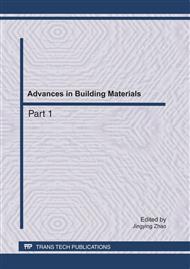p.1104
p.1109
p.1114
p.1119
p.1124
p.1129
p.1134
p.1139
p.1145
Analysis on the Influence of Debris Flow Entrainment of Path Material
Abstract:
Debris flow has a very strong destructive power which can cause a great loss of human lives and belongings, so for the purpose of a better disaster prevention and reduction, it is necessary to strengthen the knowledge about the characteristics and regulations of the motion process of debris flow. In order to analyze debris flow entrainment of path material and the influence of the distribution of entrainment zone on the dynamic process of debris flow, the numerical simulation of debris flow dynamic process of different entrainment zones is achieved by combining the theory of SH granular flow and the method of finite volume discretization. The calculation results show that due to energy loss and momentum transfer, the overall speed of debris flow is decreased and the part flow depth increased, but when the entrainment zone is at high position, the entrainment happens early, and the after-entrainment acceleration is more significant, so the mass increased by the entrainment will cause a larger disaster zone and a stronger destruction.
Info:
Periodical:
Pages:
1124-1128
Citation:
Online since:
May 2011
Authors:
Price:
Сopyright:
© 2011 Trans Tech Publications Ltd. All Rights Reserved
Share:
Citation:


